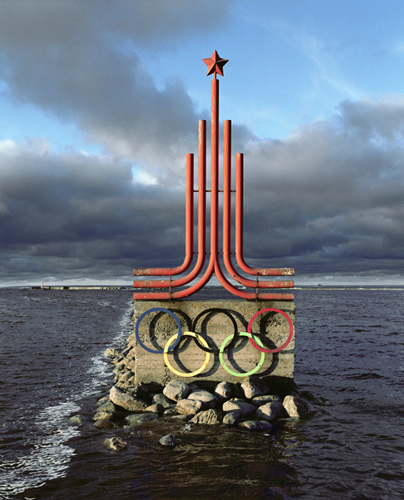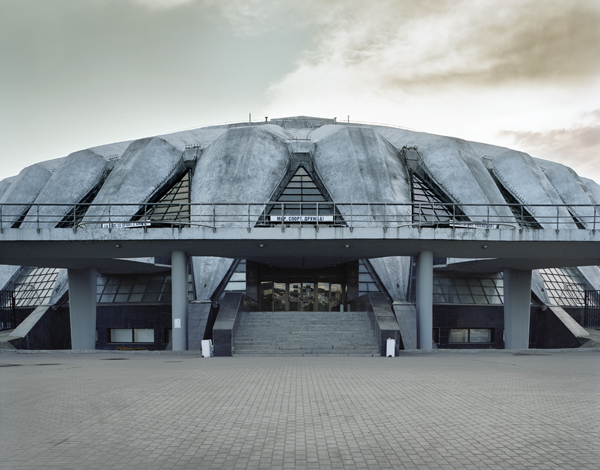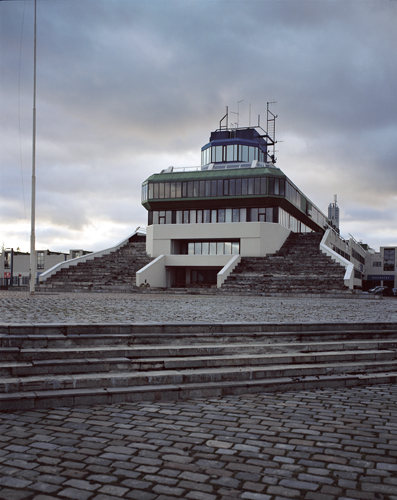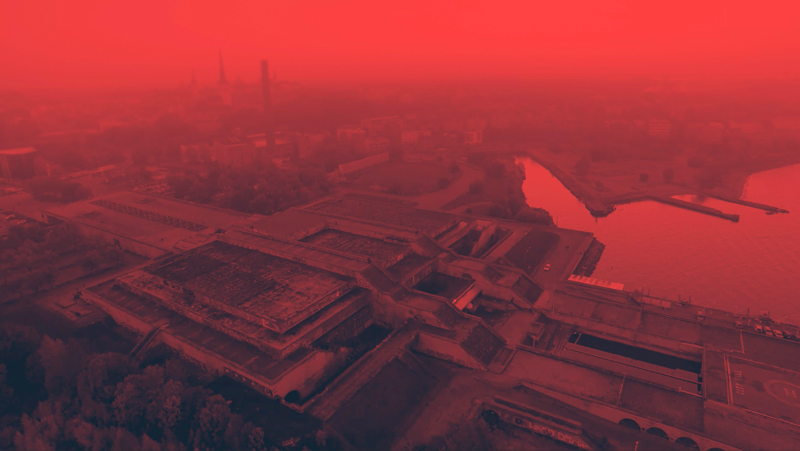Frédéric Chaubin
Former editor of a lifestyle magazine, CitizenK International, from 1994 to 2013, Frederic Chaubin turned with the XXI Century into an image maker using preferably analogic photography exclusively in medium and big format. His work is mostly devoted to personal obsessions: desorienting remnants of cultures, bewildering monuments floating into space and time, traces and shapes of stone and flesh.
Between 2003 and 2010, Frédéric Chaubin photographed the most spectacular examples of late Soviet modernism, revealing a previously neglected architecture far removed from the stereotypes of conformism and monotony that the West associated with the architecture of the USSR.
The three buildings presented here were constructed for the 1980 Moscow Summer Olympics. For this highly symbolic event, the architects were instructed to assert the boldness of Soviet construction.
The Druzhba multipurpose arena (Y. Bolchakov, I. Rozhin, V. Tarassevitch, Moscow, Russia, 1979), which resembles a science-fiction nave, hosted the volleyball events. It illustrates the fantasy of the conquest of space, omnipresent in this very singular architecture of the 1970s and 1980s, exalting Soviet achievements in this field. According to Frédéric Chaubin, who attempted to reconstruct the history of this forgotten architecture, the influence of cosmonautic shapes enabled designers to break away from serial, unimaginative patterns and try their hand at space-age extravagance. Today, the building continues to host sporting events.
Far removed from the futurism of Druzhba, the Pirita Yachting center (Avo-Himm Looveer arch., Tallinn, Estonia, 1980), on the shores of the Gulf of Finland, underlines the influence of postmodernism adopted by young Estonian architects. Like a ship's superstructure, the control tower for the nautical events illustrates the concept of architecture parlante (speaking architecture, i.e. displaying shapes evocative of the function they house), prevalent in the USSR's prestigious constructions of the time. Listed on the Estonian National Register of Cultural Monuments in 1997, the complex has since been privatized and now houses a hotel, shops and offices.
The Linnahall, or Lenin Palace of Culture and Sports (Tallinn), housed an amphitheater and a huge ice rink. The sprawling volumes and low rise are reminiscent of Frank Lloyd Wright's organic architecture, of which Raine Karp, the project's chief architect, was certainly aware of (Frank Lloyd Wright was also inspired by Mesoamerican architecture and the Mayan pyramids, echoes of which can be seen here). Designed as a transition between the city and the sea, facing the Baltic, this masterpiece is an oversized UFO in the heart of the Soviet landscape. The building is now abandoned.
Frédéric Chaubin is above all interested in the visual impact of his images, concentrating on the architecture as an object and leaving aside any context that does not serve his purpose. The framing and choice of lighting emphasize the strangeness of the encountered architecture, creating a feeling of disorientation. The "never-before-seen" shapes of these unidentified constructed objects, their outsized scale, had caught his eye and started a passionate, obsessive quest, a fascinating photographic testimony* totaling over a hundred images.
*Part of these photographs are compiled in CCCP – Cosmic Communist Constructions Photographed, Taschen, 2011.
Editions
- + Projections. Architectures olympiques
2024 - Galerie Charlot Èdition







